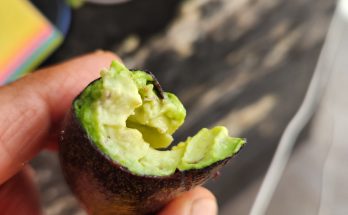By Don Patterson
My first attempt at finding knowledgeable support was to organize meetings with various non-governmental organizations in San Miguel that were involved, in one way or another, in the environment. I had some contact with a limited number of these organizations over the years and had, on certain occasions, worked on small projects with them. Others I had heard about but had no previous contact. In each case they had been helpful when I approached them with environmental problems.
Members of the local chapter of the Audubon Society stepped up to the plate when I tried to rescue 80,000 pine seedlings that had been abandoned to rot in the sun by the government and a local ranch owner. With Audubon’s help we were able to save about 30% of the trees. Another 20% were given to individuals to plant. Nevertheless, we lost half the trees by the time the ranch owner gave me permission to act. Bob Hass, who had been the president of the group twice, was a respected friend and ally. While Bob was president, we planted the first trees in what was to become the Cloutier Park. Later in the administration of Luis Alberto Villarreal I helped Bob make a proposal to the municipal government for a renewal project for the Juarez Park. As a result, Amigos of the Park had meetings with the director of the department of Environment and Ecology and the mayor. For the first time in my years in San Miguel the local government invested funds for a park renewal project.
When CANTE, later transformed to the Charco del Ingenio, requested help for a publication of Cactus, I pitched in with technical hardware support. In return, they gave me a free copy of this important work.
Nevertheless, before the meeting I had made some mental prerequisites for projects and attributes that the municipal government could support and that I could learn from. They should be pre-positive, pro-active and professional enough to help resolve the larger environmental problems in the watershed.
At the first meeting directors of 6 organizations showed up: FAI, PEASMA, CHARCO, AUDUBON, FLUVIALES DE LA VIDA, and SAVLIMOS RIO LAJA. It became immediately apparent that each organization had its own set of objectives, organizational skills and knowledge. My later research showed that between 2000 and 2015, over 30 environmental publications had been made by Sanmiguelense and NGO’s with the help of government and universities. I doubt that another municipality in our state can boast the same.
I found one person more knowledgeable than me by sheer luck. Her name was Mariana Parra. She walked into my office one morning with a proposal concerning the San Marcos River. She looked as if she had just graduated from high school. At first I smiled inside and thought, “Be careful, don’t sound condescending. We need to encourage young people”.
It wasn’t a complicated proposal. Indeed it wasn’t a big proposal. As a matter of fact, it was so small that I should have read the entire project while she sat in front of my desk. As I read her document I began to realize how little I knew. When she returned the next day I asked, “Where did you learn about river rehabilitation?”
“I am a graduate student in a watershed management program at the University of Queretaro.”
“Who is in charge of this watershed program?”
“Doctor Raul Pineda.”
Could you set up a meeting for me with him?”
“Of course”, she replied.
Less than a week later Dr. Raul Pineda came into my office and thus began a long relationship with Raul and the personal and students in his program at the university – all of them more knowledgeable than me – at the time. And I realized working with them, how important the free class was for Watershed Ecology on the EPA website.
Looking back on it, I was lucky to find smart and experienced individuals. There was above all, Dr Mark Hill and his team from Ecosystem Sciences. Simply put, nobody in the world had more combined knowledge and experience with actual watershed ecology and restoration.
Things got even better when Agustin Madrigal, the director of Salvemos Rio Laja, walked into the office with a proposal for soil restoration with 70% of the financing already establish. This was definitely, pre-positive, pro-active and professional.
Then there was Arturo Garcia, the director of Cuerpos de Conservacion in Guanajuato. In the beginning Arturo, along with Mariana Parra, played a huge role in helping the villagers along the Rio San Marcos obtain permits and capacitation for extracting sand and gravel with environmentally sound methods.
It was beginning to look like this job might be a lot of fun.
Even with this strong support of knowledgeable associates it took a year to finally put together teams that could answer the questions, what do we have? Where is it located? And what condition is it in?
*Read Part VIII of this series HERE.




